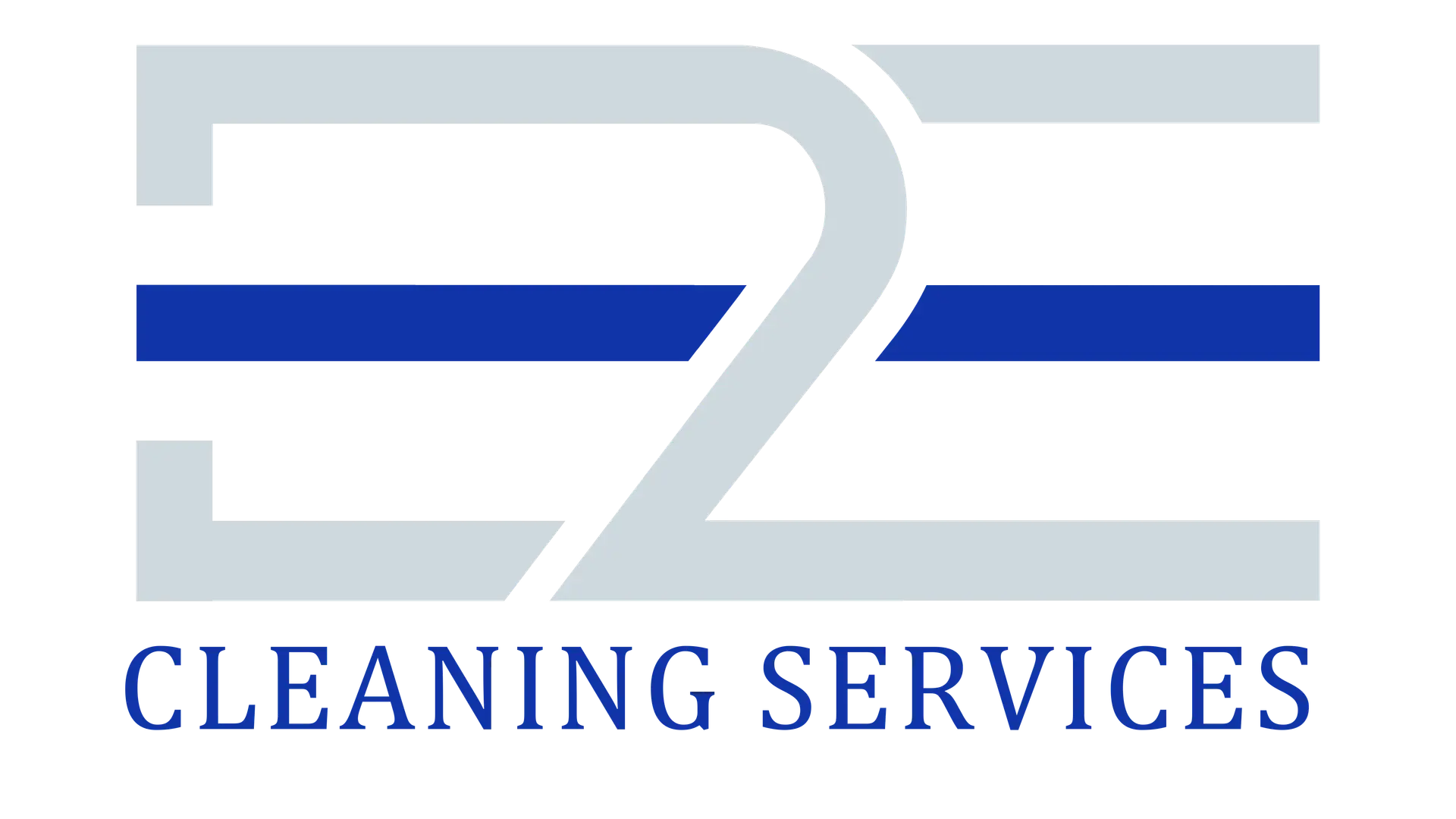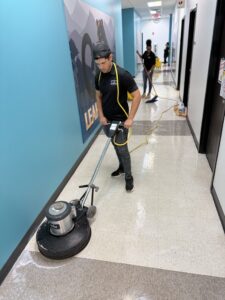The celebrations of the Independence Day may result in messed up commercial spaces. Food remains and decorations of the festivities combine with the outdoor trash of fireworks, making special cleaning needs prior to the resumption of normal operations.
This guide assists facility managers and business owners to regain workplace cleanliness, achieve health standards, and get ready to succeed throughout the summer.
The Impact of Holiday Celebrations on Commercial Spaces
Independence Day celebrations are a source of happiness and team building in the workplace, and the aftermath is a quite a lot of cleaning challenges. Conference rooms which had pre-holiday potlucks, outdoor areas with firecracker debris, and waste receptacles full of garbage all must be addressed.
These problems go beyond aesthetic concern. They create real productivity issues and health risks.
Studies have indicated that a disorganized and dirty office environment may decrease the productivity of employees by as much as 15%. In addition, viruses and bacteria can remain on high-touch surfaces in common areas 24-72 hours after contamination.
The mental effect cannot be underestimated as well employees coming back after holiday breaks are more satisfied and engaged when they come to clean and orderly places.
Facility managers have to do more than just superficial cleaning. Strategic planning is also necessary in air quality management, waste disposal compliance and restoration of special areas such as server rooms or manufacturing floors.
A whole-facility plan does not only deal with short-term cleanliness, but it helps to achieve long-term facility health and workplace wellness goals.
The best post-holiday cleaning programs are those that are not only thorough but also efficient, as business continuity is the most important fact even when a business is undergoing an intensive cleaning process.
Immediate Post-Holiday Assessment and Planning
24 hours count right after a holiday event. Start with the examination of three primary areas:
- High Traffic Areas: Lobbies, reception areas and main corridors tend to be the worst. Search areas of debris being tracked in, spills on hard surfaces and carpet fibers that require deep extraction.
- Event-Specific Zones: The location where the celebrations took place should be given special consideration. Food residue, decoration debris and furniture that require rearranging can be found in conference rooms, break rooms and outdoor gathering areas.
- Critical Infrastructure Points: Look at HVAC vents to see if they are decorated with particles, look at plumbing fixtures that can be clogged by not disposing properly, and electrical outlets that could be used to decorate with holiday lights.
Document everything. Take pictures of problematic sites and create a sorting list of tasks according to:
- Safety risks (spills, broken glass, unstable decorations)
- Biohazard (food waste, bathroom problems)
- Visible locations (spaces facing the clients)
- Technology centers, manufacturing areas (zones of specialized equipment)
In big facilities, subdivide the area into smaller units with cleaning teams assigned to them. This avoids duplication of resources, and it maintains uniform standards in the building.
Lastly, prepare to deal with post-holiday staffing realities. There may be absenteeism among the employees; therefore, it is necessary to know whether regular cleaning teams will be able to cope with the workload or additional professional services are needed.
Open up a clear communication channel to inform the staff about the progress of cleaning, particularly where some areas will be temporarily closed.
Get professional post-holiday cleaning. Click Here
Deep Cleaning Strategies for Common Problem Areas
Kitchen and Break Room Restoration
Begin with the perishables, dispose of any remaining food, clean out refrigerators of any spoiled food, and disinfect storage places.
Then pay attention to the following appliances:
- Microwaves: Wipe the turn-table with a cleanser that is safe to food. Wash the inside walls and the ceiling.
- Refrigerators: Clean the handles, seals and the interior surfaces using food grade cleaners.
- Coffee machines: Follow the cleaning cycle of the manufacturer with the recommended solution, descale when necessary.
Then wash counters and cabinets. Select the products that suit the material, and do not:
- Natural stone in acidic solutions
- Laminates and other plastics abrasives
The sink area should also be given extra attention because it is the area where the largest numbers of bacteria are found in office kitchens.
Restroom and Common Area Sanitization
The restrooms must be completely disinfected with EPA-registered products that have proven to destroy common pathogens. Do it in the following order:
- Clean up garbage and replenish.
- Put disinfectant on all surfaces and leave to dwell (typically 5-10 minutes).
- Wash mirrors and glass with non-ammonia solutions.
- Clean toilets bowls, urinals, and sinks using a recommended disinfectant.
- Clean the floors using hospital-grade disinfectant by mopping the farthest spot away from the door.
Clean high-touch surfaces in common areas such as door handles, light switches, elevator buttons and shared equipment interfaces with microfiber cloths and disinfectants containing quaternary ammonium or hydrogen peroxide.
Carpet and Flooring Rehabilitation
Hard flooring comes in different materials:
- Vinyl and LVT: Neutral pH cleaners and microfiber mops should be used and not too much moisture.
- Natural stone: Select pH neutral cleaners that do not contain acid.
- Hardwood: Apply special wood cleaners with little moisture.
In the case of carpet, begin by deep vacuuming with HEPA-filtered devices. Spots and stains should be treated with products that are compatible with the substance e.g. protein based products on food spills, solvent based products on oil based stains.
In case the carpet has a lot of soil or numerous stains, it is possible to use extraction cleaning with machines that retain the appropriate moisture levels and dry fast.
In large-scale contamination, seek professional services that have truck-mounted equipment with deep extraction to eliminate not only the visible soil but also the particles that are in the fibers.
Professional vs. In-House Cleaning: Making the Right Choice
When deciding whether to undertake post-holiday or post-event cleanings within the company or hire professionals, there are other factors to consider beyond the cost implication.
- Scale and Severity: In-house crews are fine at routine cleaning but when deep contamination is involved, particularly when multiple building systems are involved, such as floors, upholstery, and HVAC, professional assistance is typically required. Specialised equipment such as truck-mounted extractors and electrostatic sprayers are used by professionals and yield better results.
- Technical Requirements: Historical surfaces, sensitive electronics surfaces or manufacturing areas where regulatory compliance is strict, require professional skill. These crews bear credentials and expertise to clean sensitive surfaces without compromising sanitization.
- Timing Limitations: In the cases where it is important to restore business, professional services may accelerate the process of recovery. The size of teams, specialized equipment, and efficient workflows often imply that the services can be initiated and completed quicker than an in-house crew. Most providers have the capacity to deploy crews outside normal business hours in order to avoid disruption.
- Cost Considerations: In house cleaning might appear cheaper initially, but can be more costly because of the costs of labor time not worked, equipment cost or rent, costs to replenish supplies, and costs to remediate a poor cleaning job. The average cost of professional cleaning is between 0.15 and 0.30 per sq. ft. overall post-event services.
These variables should be considred regarding the type of facility, the degree of contamination, timing, special surface requirements and rush charges.
Intelligent facility managers understand that price is not the only consideration when deciding on hiring professional cleaning services. Ensure that your provider is well certified in ISSA and is involved in green cleaning programs. In addition, ensure that the firm is fully insured and bonded.
The most effective plan is to integrate professional deep cleaning experience with in-house maintenance. The result is then both comprehensive and sustainable.
Implementing an Effective Recovery Timeline
Facilities should be restored carefully after holidays or big events. An excellent timeline combines deep cleaning and maintaining the business operational.
There are five major days in a typical timeline:
Day 1 (Immediate Recovery)
- Conduct facility assessment
- Repair safety hazards and apparent debris
- Refurbish the core business environment (reception, customer facing areas)
- Begin disinfection procedures in areas with a high number of contacts
Days 2-3 (Systematic Restoration)
- Thorough clean carpets and upholstery
- Sanitizing of kitchen and break rooms
- Cover specialized locations (conference rooms, training places)
- Use smell elimination measures where necessary
Days 4-5 (The Finalization and quality control)
- Finish off any outstanding specialist cleaning
- Perform quality inspection in line with standards
- Completion of documents as a compliance measure
- Replenish cleaning materials to continue with maintenance
In order to reduce inconvenience:
- Apply zone cleaning where there is a chance to carry on with the work in other parts of the area
- Do heavy work off-hours, and disruptive work like carpet extraction
Make sure the employees are informed effectively of cleaning schedules, temporary relocations and areas that are not to be entered.
Mark clean paths around the facility to avoid recontamination of areas that have been restored.
In the case of multi-tenant buildings or campus settings, be sure to align with all stakeholders to make sure that cleaning operations do not cause unintended interference of operations nearby. You may want to set up temporary alternative workstations to accommodate employees who are displaced when their main workplaces are being thoroughly cleaned.
The most effective rescue efforts remain adaptable and incorporate contingency time into the plan to accommodate unforeseen problems such as water infiltration due to outdoor festivities or broken plumbing, or contamination that is more widespread than initially measured. This versatility eliminates cascade delays that extend the overall restoration period.
Preparing for Continued Summer Success
The holidays are over, and it is a possibility to establish new regulations of a cleaner summer. When you develop intelligent preventive measures at this stage, your team will not run around in the future:
- Improved entry systems. Put up heavier walk-off matting (minimum 18 ft) at all entrances. This traps 80 % of dirt.
- Daily, weekly and monthly schedules. Create schedules according to the needs of the summer:
- Daily clean high-touch surfaces.
- Clean restrooms thoroughly, particularly in the area of floor drains, every week.
- Clean HVAC vents and returns every other week to ensure that humid air does not lead to mold.
- Train employees. Provide simple and clear instructions regarding maintaining common spaces clean and a clean desk policy on individual spaces.
- Proofread. Monitor cleanliness using checklists of inspection. Log information to identify trends that indicate larger issues.
- The appropriate supplies. Stock up summer-specific products like fungicidal cleaners, outdoor furniture treatments, UV-blocking window sprays and odor-reducing products in waste areas.
The switch to a year-round maintenance instead of holiday catch up allows maintaining standards and saving resources to be used in the following year.
Conclusion: Beyond the Holiday Cleanup
The July 4th clean-up is more than a tidying up. It demonstrates that the company cares about maintaining professional standards and operatating efficiently. When it is done correctly, the productivity increases, the number of those calling in sick decreases, and the place´s lifespan increase.
Good managers consider these busy cleaning jobs as an opportunity to review all the cleaning plans, identify major issues and correct them throughout the year. They document what is effective so that professionals and new employees understand how to manage the facility during hard times.
To maximize the cleaning budget, seek quality service partners who understand your industry, as well as your building. These partners introduce new products, new ideas, and special skills that transform cleaning expenses into a major aspect of operating the business successfully.






